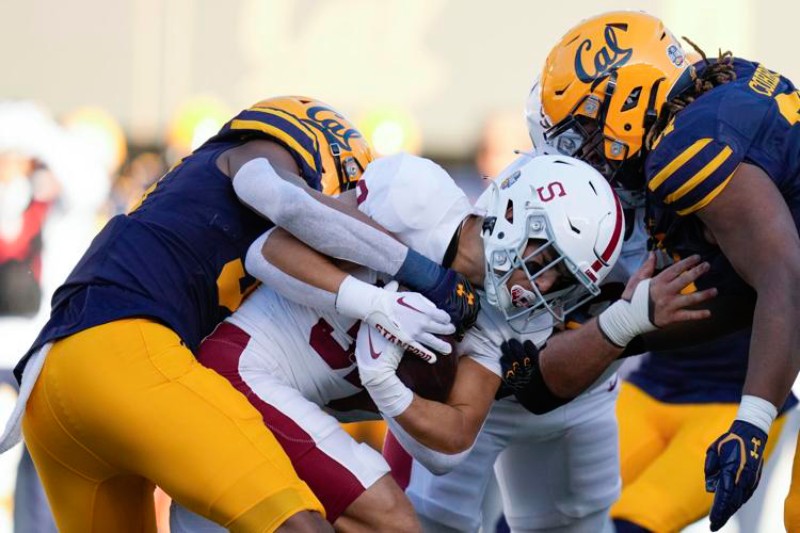Sports
Stanford, California, and SMU are now a part of the ACC, making it the latest super conference

The Atlantic Coast Conference voted on Friday to accept Stanford, California, and SMU for the upcoming season, giving two more schools from the Pac-12 conference a place to call home and establishing a fourth super conference in major college sports.
With this decision, the ACC will receive a windfall of revenue from its present members.
According to Commissioner Jim Phillips, “It really is a transformational day for the ACC.”
Starting in August 2024, the league with origins in Tobacco Road in North Carolina will have 17 schools participating in football and 18 in the majority of other sports, with Notre Dame continuing to play football independently.
For the ACC to authorize expansion, 12 of its 15 members have to vote in favor of it.
“I can tell you when we left that call today, everybody was in a really good place and felt really good about the process,” Phillips said.
Florida State and North Carolina both cast no votes. The Seminoles said that the action did not entirely allay their worries over the ACC’s revenue distribution model.
“All three schools are outstanding academic and athletic institutions, and our vote against expansion does not reflect on their quality,” Florida State athletic director Michael Alford said. “We look forward to earning new revenue through the ACC’s success incentives initiative, based on our continued excellence. We’re grateful to the league for continuing to listen to our concerns.”
The ACC will now have members in at least three time zones, just like the Big Ten and Big 12.
From Boston in the Northeast through Miami in South Florida, on out to Dallas in the center of the Southwest, and up to Northern California, where Stanford and Cal are located, it will cover a wide geographic area. In South Bend, Indiana, Notre Dame is currently the most western ACC school, with Louisville being the most western among football members.
Starting in 2024, the ACC will join the Southeastern Conference, Big Ten, and Big 12 as the fourth league to have at least 16 football-playing members.
Concerns have been made regarding a variety of issues as a result of the creation of the expansive leagues, including the effect on athletes’ travel, the shifting recruiting landscape, and the cherished lost rivalries because supporters must now travel to other cities to support their teams.
When the 2024 schedules are finalized, Stanford stated that it anticipates no or minor scheduling changes for 22 of its 36 sports.
“The ACC is really interested in using Dallas as a place where teams might come together to have games to minimize the impact of travel on both eastern members and Cal and Stanford,” Cal Chancellor Carol Christ told reporters.
After three years of tumultuous movement that reduced the so-called Power Five to four, the move appears to signal the end of this round of realignment among the nation’s wealthiest and most prominent conferences.
“We’ve gone from regional-based conferences to national, coast-to-coast conferences,” Phillips said. “Either you get busy or you get left behind.”
After the Pac-12 was dismantled by the Big Ten and Big 12, it was a marriage of desperation for the Bay Area colleges.
“Conference affiliations and the broadcast revenue they generate provide key financial support for the wide array of sports that Stanford offers,” athletic director Bernard Muir said. “Joining the ACC will ensure the Power Conference competitive infrastructure and long-term media revenues that are critical for our student-athletes to compete.”
The ACC’s long-term agreement with ESPN will generate more media rights revenue with the addition of three schools, and the league will be able to distribute a large portion of that additional money to current members.
Upon joining, new conference members frequently, but not always, give up their whole share of earnings for several years.
According to a person familiar with the details, Cal and Stanford will earn a partial share of the expected $25 million per year in ACC Tier 1 media revenue for the following nine years before receiving the full payment in the final three years of the conference’s contract with ESPN. The ACC and the schools have not released the financial information, so the individual talked to the AP on the condition of anonymity.
According to the source, Cal and Stanford will receive a 30% share for the first seven years, followed by 70% in year eight and 75% in year nine before receiving the entire amount.
SMU, a Dallas school that is now a member of the American Athletic Conference, will forgo all ACC media rights distribution for a period of nine years, according to a second person with direct knowledge of the decision. The speaker requested anonymity since the school would not disclose its tactics.
According to SMU President R. Gerald Turner, ACC revenues will contribute to the school’s future revenue growth.
From the ACC Network, the College Football Playoff, bowl games, and NCAA men’s basketball tournament units, all three schools will right away receive their full revenue shares.
“You have the championships, the CFP fund that is coming in, part of what they’ve created is an incentive plan that we’re all in,” Turner said, referring also to Stanford and Cal. “There are more ways to get funding than just the media plan.”
The ACC has been bringing in record amounts of money, but it still lags behind the Big Ten and Southeastern conferences and faces an even wider gap when those leagues’ new TV deals begin to take effect. The ACC’s agreement is valid until 2036.
According to tax records, the ACC’s overall revenue for the 2021–22 season was close to $617 million. This includes paying out an average of $39.4 million to full members, with a partial share going to Notre Dame as a football independent (approximately $17.4 million).
The SEC reported approximately $802 million in revenue ($49.9 million per school) for that same period, whereas the Big Ten claimed $845.6 million in total revenue (an average of $58 million in school payments).
The Big 12 earned more money per school (approximately $43.6 million) despite the Big 12 having fewer members (just 10), The ACC outperformed the Big 12 in overall revenue (by around $136 million) to finish third among the Power Five that season.
The ACC announced intentions for colleges to keep more money based on their postseason success, which has generally been divided equally among conference teams, as a result of the anxiety over revenue.
How much of the additional funding from ESPN for three additional members will go into the new performance bonus pool and how much will be distributed evenly among current members had been the sticking point in the expansion process.
Despite her refusal to elaborate, Phillips did suggest that some of the additional funds would be allocated to each of these categories.
When the conference presidents decided not to vote on adding the three schools three weeks ago, Clemson, Florida State, North Carolina, and North Carolina State had all expressed opposition to the expansion. On the condition of anonymity, an individual with knowledge of the vote said that North Carolina State had revised its position.
Cal and Stanford are the ninth and tenth schools to advise the Pac-12 that they will no longer be participating in the so-called Conference of Champions.
Earlier last month, the Big Ten enticed Oregon and Washington to leave. That followed Southern California and UCLA’s announcement that they would leave the Pac-12 for the Big Ten in 2024 by a little more than a year. For the upcoming academic year, the Big 12 has snatched Arizona, Arizona State, Colorado, and Utah from the Pac-12.
Only Washington State and Oregon State remain in the Pac-12. Rebuilding the Pac-12 is the intended course of action, according to representatives from both schools, but it becomes more challenging without Stanford and Cal. The likelihood of joining the Mountain West increases.
Mike Aresco, the commissioner of the American Athletic Conference, announced in a statement that the AAC would no longer be pursuing expansion with Oregon State and Washington.
Both Stanford and California have long-standing athletic programs that have produced Olympians, all-stars, and members of the Hall of Fame. Examples include Stanford’s Super Bowl-winning quarterback John Elway and swimmer Katie Ledecky, as well as Cal’s NFL MVP Aaron Rodgers and swimmer Missy Franklin.
The Cardinal won the women’s NCAA basketball championship in 2021, and last year they won the Directors’ Cup, which assesses the success of an athletic department as a whole, for the 26th time. Recently, football victories for the Big Game adversaries have been more difficult to come by. In the last four years, Stanford has only had a 14-28 record, whereas the Bears have had three winning seasons since 2010.
Since the program was infamously shut down by the NCAA as part of sanctions for paying players back in the early 1980s, SMU’s return to major conference football with the ACC marks the program’s first time back in that setting.
Although the schools are far removed from their new conference mates, they do have some characteristics with the smaller private schools like Duke, Wake Forest, and Boston College as well as the ACC’s flagship state schools like North Carolina and Virginia.
“This is a great moment for the ACC, it really is,” Phillips said. “And I think there’s no question that as we welcome Cal, Stanford, and SMU in, that group will be together.”
-

 Business2 weeks ago
Business2 weeks agoNayef Doleh Examines International Humanitarian Fundraising Strategies
-

 Business3 weeks ago
Business3 weeks agoHow Black Banx is Redefining Global Banking Strategies in 2025
-

 Business2 weeks ago
Business2 weeks agoHow to fill MSME Form 1? Step-by-Step Guide
-

 Tech4 weeks ago
Tech4 weeks agoHow to Switch Between Microsoft Teams and Skype, How To Export Messages, Files, and Contacts from Skype Before It Shutting Down
-

 Tech3 weeks ago
Tech3 weeks agoMicrosoft Teams to End SMS Messaging Feature Support for Android Phones and Switch to Phone Link App as Alternative
-

 Business4 weeks ago
Business4 weeks agoPurpose of the AIRdiamond Project
-

 Education3 weeks ago
Education3 weeks agoSchool Of Odd Thinkers – Think Odd, Learn a lot, and Earn a lot
-

 Startup4 weeks ago
Startup4 weeks agoFrom Trends to Sales: How Small Businesses Can Capitalize and Maximum Reach on Social Media


















